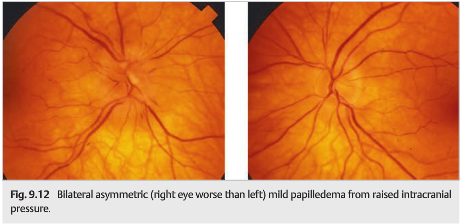Questions:
1. How much anisocoria is necessary for the diagnosis of Horner’s syndrome to be made using cocaine drops?
a. 0.3 mm
b. 0.5 mm
c. 1.0 mm
d. 1.5 mm
2. What is the approximate mean odds ratio for the Cocaine pharmacologic test for Horner syndrome assuming a postcocaine anisocoria of at least 0.8mm?
a. 10:1
b. 100:1
c. 1,000:1
d. 10,000:1
3. Which of the following races may not dilate well with topical cocaine?
a. Asians
b. African Americans
c. Caucasians
d. Native Americans
4. Does the cocaine test for Horner syndrome result in a positive urinary test for cocaine?
a. Yes
b. No
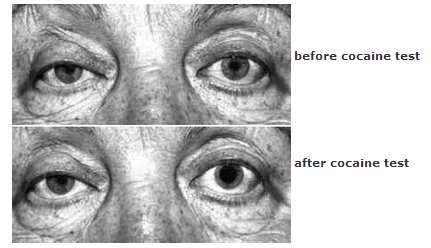
Fig. 5.3. Right Horner’s Syndrome3
 1
1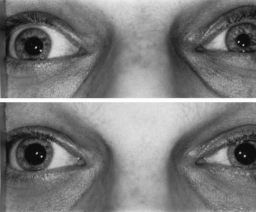 1
1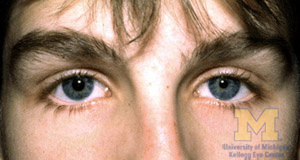 1
1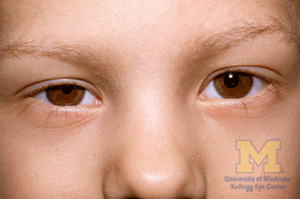 1
1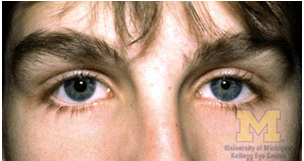 1
1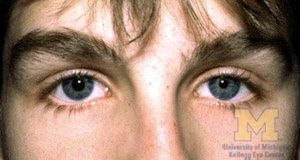 4
4
 4
4